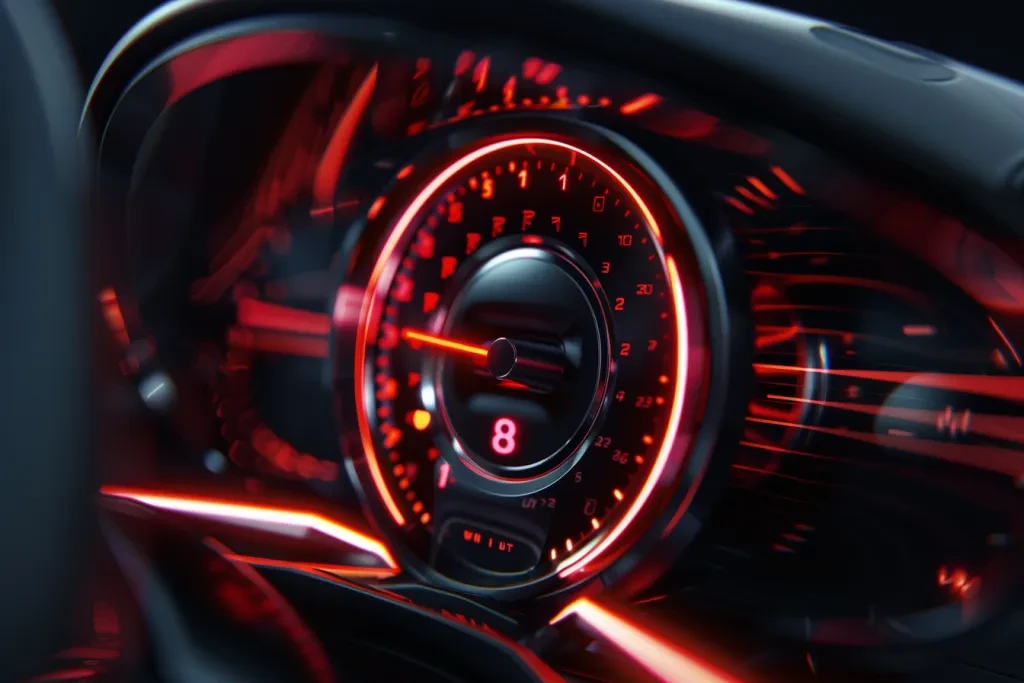
What Does a Tachometer Measure? Terrific Insights Revealed
Share
The world of technology is filled with essential tools that help us understand and interact with various systems, and one such tool is the tachometer. For those asking what does a tachometer measure, it is crucial to delve into its specific functions and applications.
A tachometer is an instrument that measures the rotation speed of an object, typically in revolutions per minute (RPM). Whether in vehicles, machinery, or other rotating equipment, a tachometer provides vital data to ensure optimal functioning and efficiency. The need for precise measurements in our fast-paced technological landscape is immense, making understanding this instrument absolutely unmissable for tech professionals and enthusiasts alike.

How Tachometers Work: The Engineering Behind Measurement
Understanding what does a tachometer measure starts with grasping how it works. Tachometers work by either mechanical or electronic means to determine the speed of rotation. Here are the two main types:
Mechanical Tachometers
Mechanical tachometers utilize a mechanical linkage to gauge speed. They often contain a spinning mass. As the mass spins faster with increased rotational speed, it moves a needle across a measurement scale. This needle indicates the RPM, allowing for quick readings.
Electronic Tachometers
In contrast, electronic tachometers use sensors to detect rotation speeds. These sensors send signals to an electronic circuit, which processes the data and displays it on a digital screen. Modern vehicles predominantly use electronic tachometers due to their enhanced accuracy and ability to integrate with onboard computers.
The Importance of Tachometers in Various Applications
Tachometers play a pivotal role in numerous fields. Here are some significant applications:
1. Automotive Industry
In vehicles, tachometers provide invaluable feedback to drivers regarding engine performance. By understanding the engine speeds, drivers can optimize gear shifting and avoid engine strain. This insight is essential for anyone who understands vehicle dynamics.
2. Aviation
In aviation, tachometers help pilots monitor engine performance, ensuring that they operate within safe parameters. Knowing what the tachometer measures can prevent excessive strain and potential engine failures, especially during takeoff and landing.
3. Manufacturing and Heavy Industry
In heavy equipment and manufacturing processes, tachometers are crucial for performance monitoring. For example, machinery requires a specific RPM to operate effectively. Tachometers help in adhering to these requirements, ensuring productivity and safety.
Common Misconceptions About Tachometers
Despite their importance, several misconceptions persist regarding tachometers:
1. Tachometers Only Measure RPM
While it is true that tachometers are primarily designed to measure RPM, many modern devices incorporate additional features like data logging and system diagnostics, allowing them to provide comprehensive insights into performance.
2. Only Mechanical Devices Use Tachometers
This is incorrect as electronic tachometers are now more prevalent. Their digital readouts offer better accuracy and real-time data processing, making them a preferred choice in many scenarios.
Understanding Your Tachometer: Reading and Interpretation
Learning how to read a tachometer can be immensely helpful for tech professionals and enthusiasts. Here are some remarkable tips:
1. Familiarize with the Scale
Most tachometers will have a scale indicating RPM. Understanding this scale is vital for proper interpretation.
2. Observe for Consistency
A sudden spike in RPM readings may indicate a potential issue with the machinery or engine. Regular observation can aid in early detection of problems.
3. Integrate Tachometer Data with Other Metrics
Dont rely solely on tachometer readings. Combining this data with other metrics, such as temperature and pressure readings, can provide a more comprehensive understanding of performance.

FAQs about What Does a Tachometer Measure
1. What types of tachometers are available?
Tachometers can be either mechanical or electronic, with many modern setups leaning towards electronic designs for better accuracy.
2. Can tachometers be inaccurate?
Yes, factors such as improper calibration, mechanical wear, and electrical issues can lead to tachometer inaccuracies.
3. What is the significance of RPM in automotive performance?
RPM readings enable drivers to manage engine performance effectively. Understanding RPM helps in gear shifting, which is crucial for maintaining engine health.
For an in-depth exploration of tachometers, check out the Britannica article. Additionally, to simplify tachometer information, visit this resource on tachometers.
As an Amazon Associate, I earn from qualifying purchases.
